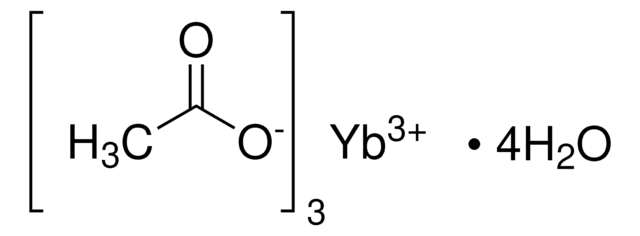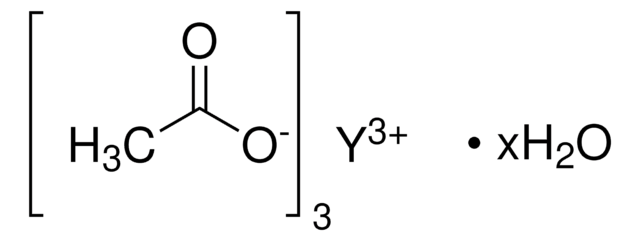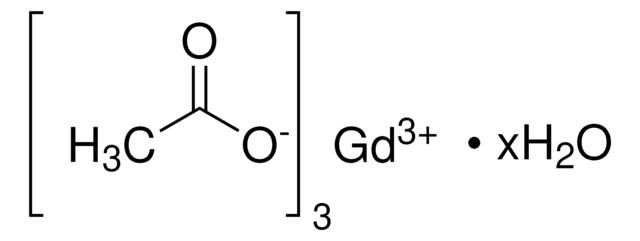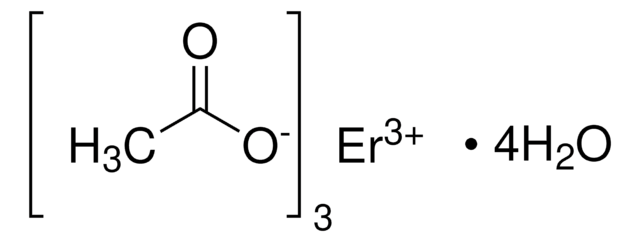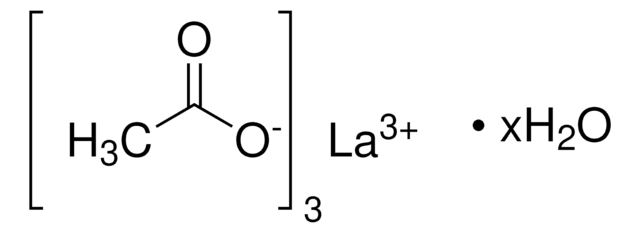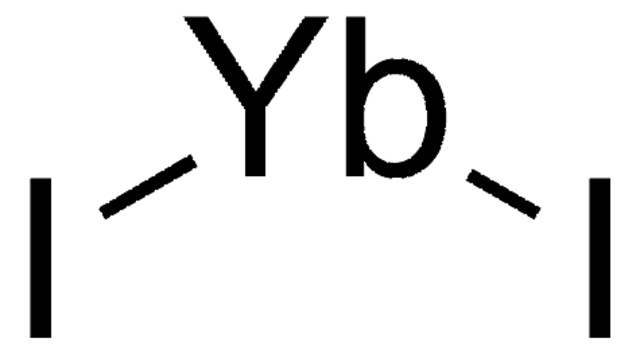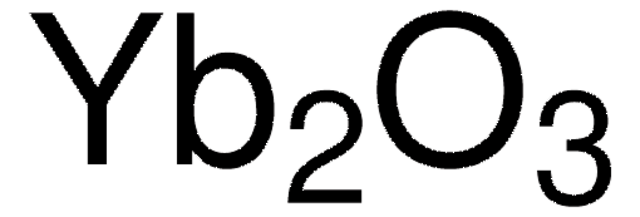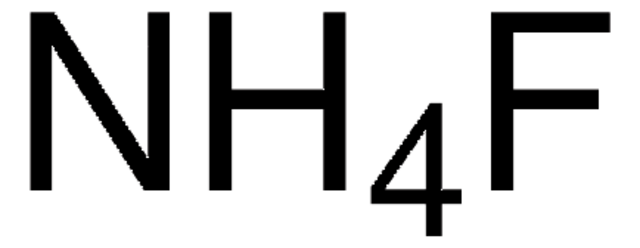544973
Ytterbium(III) acetate hydrate
99.95% trace metals basis
Synonyme(s) :
Acetic acid ytterbium hydrate
Se connecterpour consulter vos tarifs contractuels et ceux de votre entreprise/organisme
About This Item
Formule linéaire :
Yb(C2H3O2)3 · xH2O
Poids moléculaire :
350.17 (anhydrous basis)
Numéro CE :
Numéro MDL:
Code UNSPSC :
12352103
ID de substance PubChem :
Nomenclature NACRES :
NA.23
Produits recommandés
Niveau de qualité
Essai
99.95% trace metals basis
Forme
powder or crystals
Pertinence de la réaction
core: ytterbium
reagent type: catalyst
Chaîne SMILES
O.CC(=O)O[Yb](OC(C)=O)OC(C)=O
InChI
1S/3C2H4O2.H2O.Yb/c3*1-2(3)4;;/h3*1H3,(H,3,4);1H2;/q;;;;+3/p-3
Clé InChI
PHWPQNTXTCAARQ-UHFFFAOYSA-K
Catégories apparentées
Application
- Highly luminescent, biocompatible ytterbium (III) complexes as near-infrared fluorophores for living cell imaging: This study highlights the development of ytterbium complexes with enhanced near-infrared luminescence suitable for live-cell imaging, utilizing Ytterbium(III) acetate hydrate as a precursor. The findings demonstrate significant potential for biomedical applications, particularly in imaging techniques sensitive to deeper tissue penetration (Ning et al., 2018).
Code de la classe de stockage
11 - Combustible Solids
Classe de danger pour l'eau (WGK)
WGK 3
Point d'éclair (°F)
Not applicable
Point d'éclair (°C)
Not applicable
Équipement de protection individuelle
Eyeshields, Gloves, type N95 (US)
Faites votre choix parmi les versions les plus récentes :
Déjà en possession de ce produit ?
Retrouvez la documentation relative aux produits que vous avez récemment achetés dans la Bibliothèque de documents.
Les clients ont également consulté
Aleksandra Kiseleva et al.
ACS applied materials & interfaces, 11(26), 22962-22972 (2019-06-30)
Spider silk is a natural material possessing unique properties such as biocompatibility, regenerative and antimicrobial activity, and biodegradability. It is broadly considered an attractive matrix for tissue regeneration applications. Optical monitoring and potential control over tissue regrowth are attractive tools
Huihui Wang et al.
Talanta, 197, 558-566 (2019-02-18)
A selective, simple and environment-friendly type fluorescence sensing platform between upconversion nanoparticles (UCNPs) and melanin-like polymer utilizing the photoinduced electron-transfer (PET) mechanism was developed. The effective fluorescence quenching of UCNPs by melanin-like polymers could detect tyramine and tyrosinase (TYR) activity
Agnieszka Noculak et al.
Nanotechnology, 28(17), 175706-175706 (2017-03-08)
Three sets of β-NaGdF
Qianqian Su et al.
Frontiers in chemistry, 8, 836-836 (2020-10-24)
Lanthanide-based upconversion nanoparticles can convert low-energy excitation to high-energy emission. The self-assembled upconversion nanoparticles with unique structures have considerable promise in sensors and optical devices due to intriguing properties. However, the assembly of isotropic nanocrystals into anisotropic structures is a
Wei Kong et al.
Inorganic chemistry, 56(2), 872-877 (2017-01-06)
Lanthanide-doped upconversion nanoparticles with a suitable surface coating are appealing for biomedical applications. Because high-quality upconversion nanoparticles are typically prepared in an organic solvent and passivated by hydrophobic oleate ligands, a convenient and reliable method for the surface modification of
Notre équipe de scientifiques dispose d'une expérience dans tous les secteurs de la recherche, notamment en sciences de la vie, science des matériaux, synthèse chimique, chromatographie, analyse et dans de nombreux autres domaines..
Contacter notre Service technique